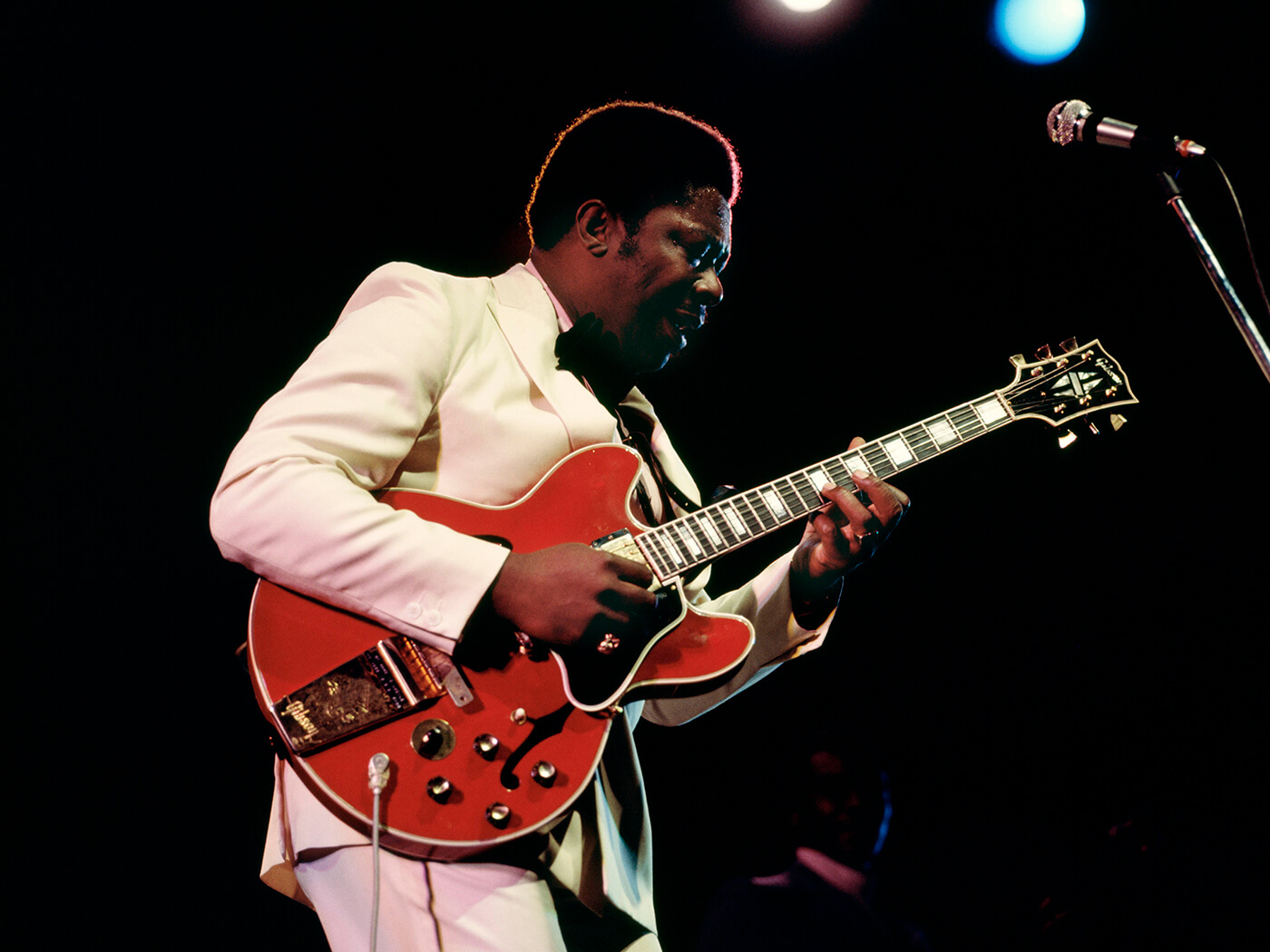Related Tags
How to play blues like BB King
Or, otherwise known as ‘The importance of delivering the right note at the right time’.

Image: David Redfern / Redferns
It’s almost selling him short to describe the guitar playing of Riley B King as ‘influential’. In truth, it’s hard to find a guitar player who on some level doesn’t owe a debt to the expressive and lyrical playing of the late, great Mississipi bluesman – many of them guitar legends in their own right.
From Clapton to Peter Green, Gary Moore to John Mayer and countless others beside, it’s rare to find a guitar player who hasn’t cribbed something from BB King one way or another.
King is best known for his laid-back style, wonderfully expressive vibrato and effortless phrasing. Coupled with his glorious guitar tone – usually created with the help of his signature Gibson ES-model ‘Lucille’ and a Lab Series L5 amp – he sets a high bar for blues playing.
BB’s style was never about speed, but expression, so you won’t have to worry about speedy intense licks here – it’s all about delivering the right notes at the right time.
All the licks in this lesson are in the key of B. A common trait of BB King’s playing was to mix major and minor pentatonic scales so here is the B minor and B major pentatonic scale. Learn these two shapes and then imagine them overlaid on top of each other.

Lick 1

BB often played ahead of the beat with the aim of targeting a chord note at the end of a lick. This lick starts on the 4th beat of the bar with the B note (7th fret of the E string) landing on the first beat of the next bar.
This would be a typical opening lick where the B note would land on the I chord (the B chord in this case). The lick’s first phrase is taken from the B major pentatonic and the second phrase from the B minor pentatonic.
Lick 2

Sometimes, BB would lean on some jazz-style phrasing. This is a good example of a jazzy descending run that crosses between major and minor.
The lick starts with a slide from the minor to major third on the high E string before running down the major pentatonic. There are a few major notes in the descending run here. The 8th fret of the G and the 6th fret of the A are both major thirds.
The lick resolves back on the root note so this would be a great lick to play back into a I chord.
Lick 3

If you take the top end of the third shape of the major pentatonic, you get an area of the fretboard known as the ‘BB Box’. This is a great little five-note box that BB played with a lot. This lick is an example of the typical pattern you might see him play there. Note at the end, the final two notes are played in quick succession. You want the 14th fret on the E string to be just a passing note as you jump back to the root.
Lick 4

In the second shape of the minor pentatonic, you can add a major third to give it some interesting texture. BB would often start this type of lick in minor before going in and out of the major note and then finishing back in minor. Think of the constant change between major and minor third as a rhythmic pattern. It’s shown here as straight 16th notes, but you can play it with a little swing to really nail that BB vibe.
Lick 5

Using the BB box, you can also cross into the third shape of the minor pentatonic. The lick starts with a half-step bend on a minor note, the half step takes it to a major note. The lick ends with another BB trademark. Play the song root note on the E string high up and slide it out. BB would often throw these notes into the middle of other licks. Try playing that high root note a few times before sliding out for a different take on the BB trademark.
Try It Yourself
The principle of playing across the major and minor pentatonics is is transposable into every other key. The first position of both the major and minor pentatonics overlay very closely so once you have that overlaid shape in mind, it’s easier to blend the major and minor notes together.
About the author
Leigh Fuge is a guitar teacher and professional musician from Swansea, UK. He has taught hundreds of students face to face and via the MGR Music platform. He has more than 10 years of experience working as a touring musician, session guitarist and teacher. Visit mgrmusic.com to find out about guitar tutors in your area.
